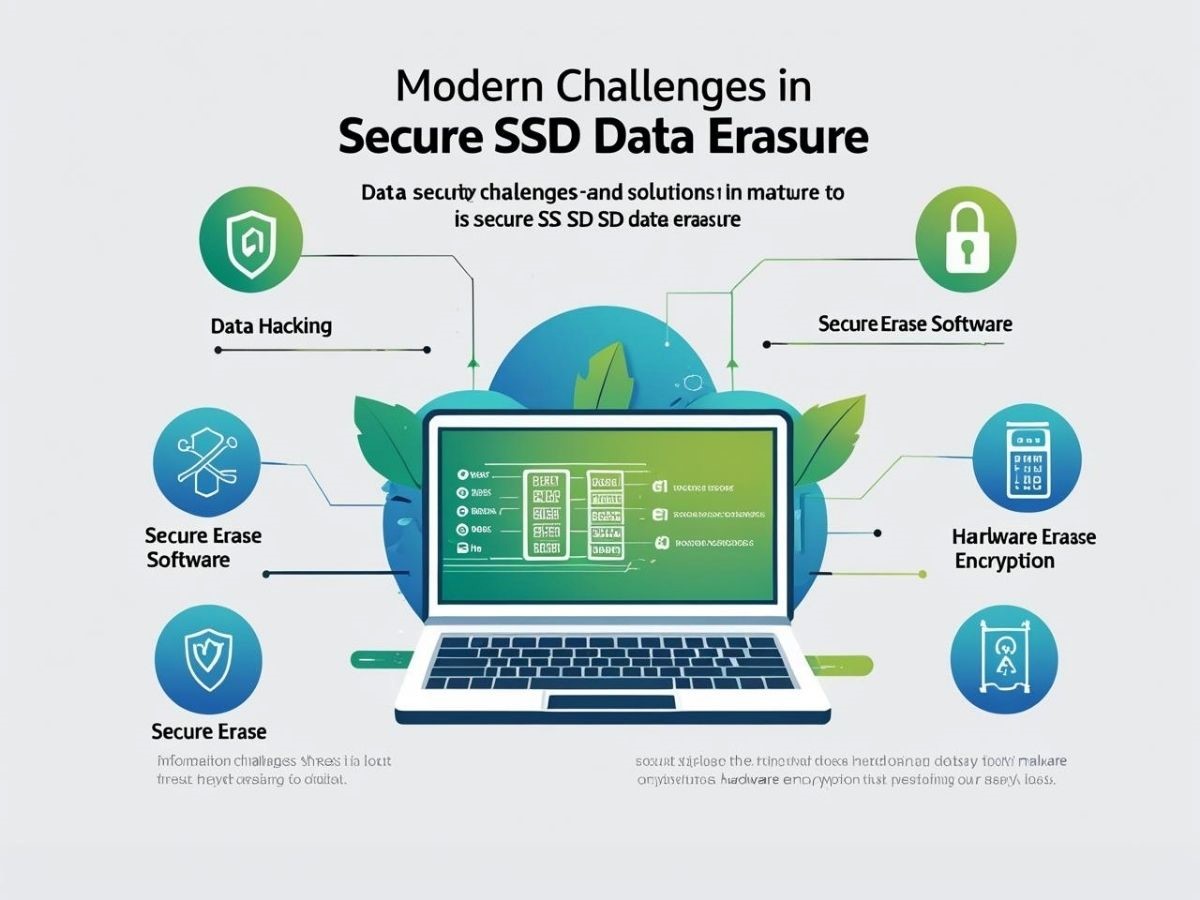
The exponential rise of data-driven businesses has made data security an indispensable requirement. With the advent of solid-state drives (SSDs), traditional hard disk drive (HDD) wiping methods no longer suffice. These conventional techniques often fail to completely sanitize SSDs, thereby exposing enterprises to data breaches, compliance issues, and reputational harm. This article delves into the specific challenges associated with SSD data erasure, the evolving regulatory landscape, and the secure practices that businesses must implement.

- Why HDD Erasure Methods Fall Short for SSDs
Many IT teams mistakenly apply HDD erasure techniques such as overwriting or degaussing to SSDs. However, these methods do not account for the non-linear storage architecture of SSDs, where data is distributed across memory cells rather than written sequentially.
Research Insight: According to a University of California, San Diego study, standard overwrite techniques left 67% of SSD data recoverable, while the same methods on HDDs achieved nearly complete sanitization.
This highlights a pressing gap: methods effective for HDDs are inadequate for SSDs, exposing sensitive data to retrieval even after “erasure.”
- SSD-Specific Challenges in Secure Erasure
SSDs introduce architectural complexities that hinder complete data sanitization:
- Wear Leveling: To extend drive life, SSDs distribute writes evenly across cells, making it impossible to guarantee that overwriting will touch all original data blocks.
- TRIM Command Limitations: While TRIM informs SSDs which blocks can be erased, it doesn’t guarantee immediate and permanent data deletion.
- Over-Provisioned Areas: These hidden storage zones are reserved for performance optimization. Unfortunately, they can also harbor residual sensitive data that standard erasure tools never access.
Ponemon Institute research shows that 36% of enterprises experienced data exposure due to residual SSD data after attempted sanitization.
- Secure Erase Commands vs. Software-Based Wiping
The industry recognizes two major approaches:
- Secure Erase Commands (Firmware-Level): These leverage built-in drive functions to wipe all user-accessible areas. While effective in many cases, they are often inconsistent across vendors and lack standardized verification.
- Software-Based Wiping Solutions: Advanced sanitization software offers repeatable processes with auditable logs, multi-pass overwrites, and compliance assurance. When integrated with enterprise IT asset management, these tools deliver both security and traceability.
Best practice combines firmware-level erasure with software verification and reporting to ensure no data remnants are left behind.
- Verification, Reporting, and Compliance Imperatives
Modern enterprises cannot rely on “blind trust” in erasure. Regulators demand auditable proof of sanitization.
- Verification ensures all target areas, including hidden and over-provisioned spaces, are sanitized.
- Detailed Reports provide tamper-proof evidence, enabling organizations to pass compliance audits confidently.
- Regulatory Mandates: Industries like healthcare, finance, and government require NIST 800-88 compliant erasure certificates to mitigate data breach liability.
A 2023 Gartner report indicates that by 2026, 75% of organizations undergoing audits will require auditable data sanitization logs for IT asset disposition.
- Evolving Standards Shaping the Industry
New standards are redefining how enterprises handle SSD sanitization:
- IEEE 2883-2022: Establishes clear guidelines for erasure, verification, and reporting across both SSDs and HDDs.
- NIST SP 800-88 Rev.1: Sets the benchmark for media sanitization, emphasizing verification and auditable processes.
Enterprises that fail to adopt these evolving standards risk falling behind on compliance, customer trust, and global data security expectations.
Conclusion: The Path Forward
As SSDs become the backbone of modern IT infrastructure, secure sanitization demands specialized approaches, verifiable results, and alignment with global standards. Traditional HDD methods are no longer sufficient—organizations must adapt to prevent costly exposures.
DiskDeleter offers businesses a robust and reliable solution for secure data erasure, boasting compliance with NIST 800-88 and IEEE 2883-2022 standards. With 16 different methods for HDD and SSD data erasure and tamper-evident certificates of erasure, DiskDeleter ensures your data is thoroughly and securely erased, setting the benchmark for future-proof, audit-ready SSD erasure solutions.
© 2025 Jungle KK - Powered By Knowledge Fortune
